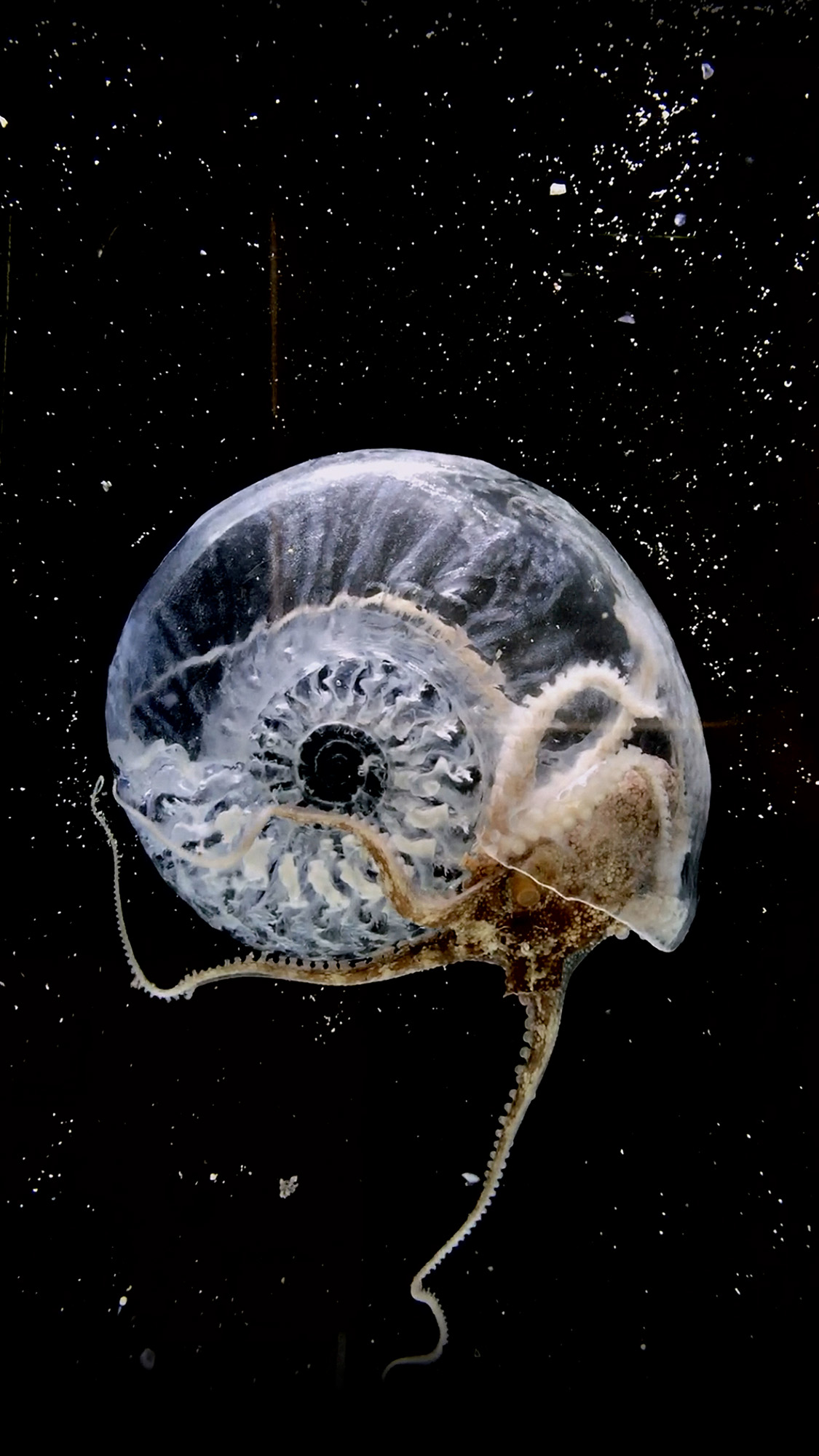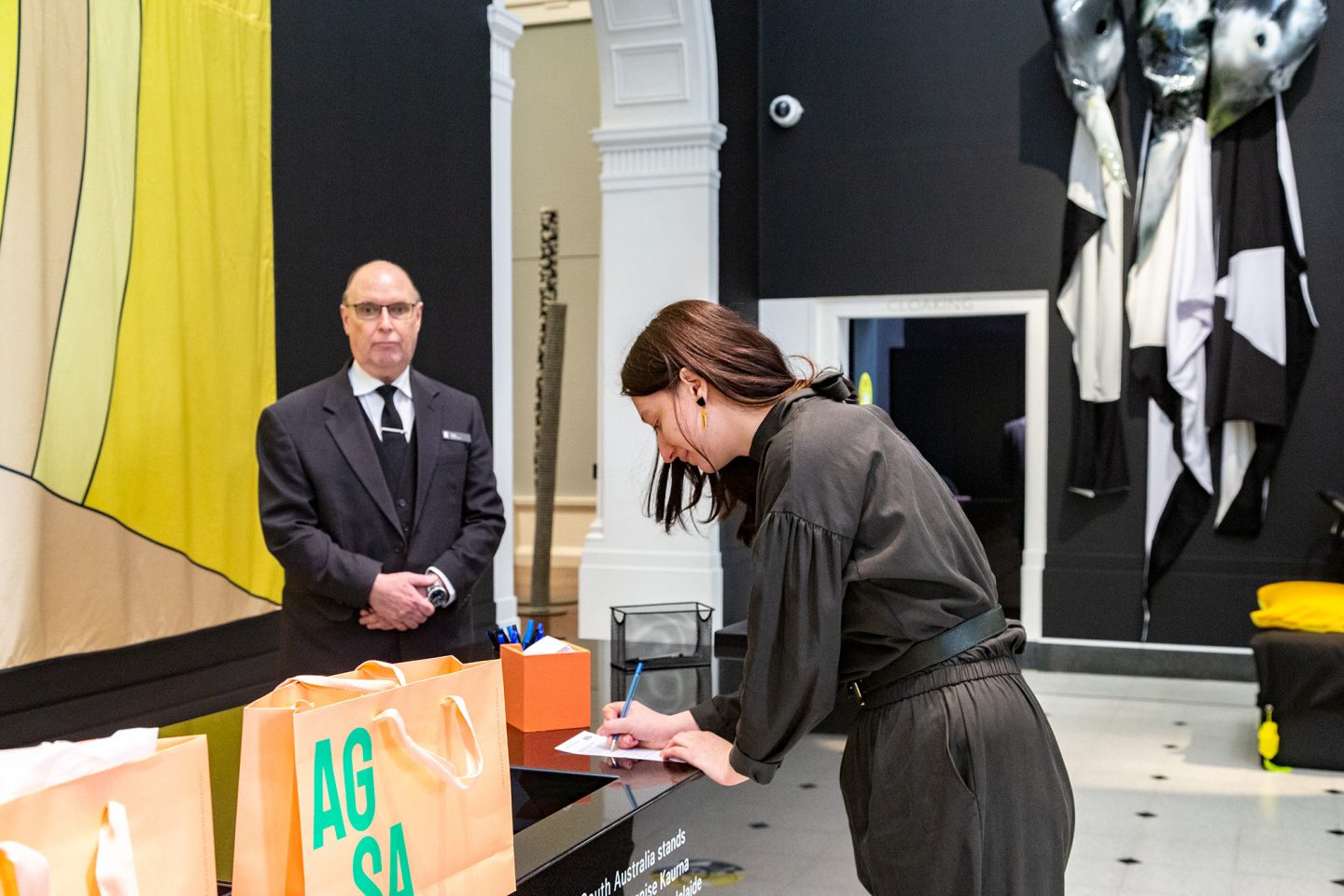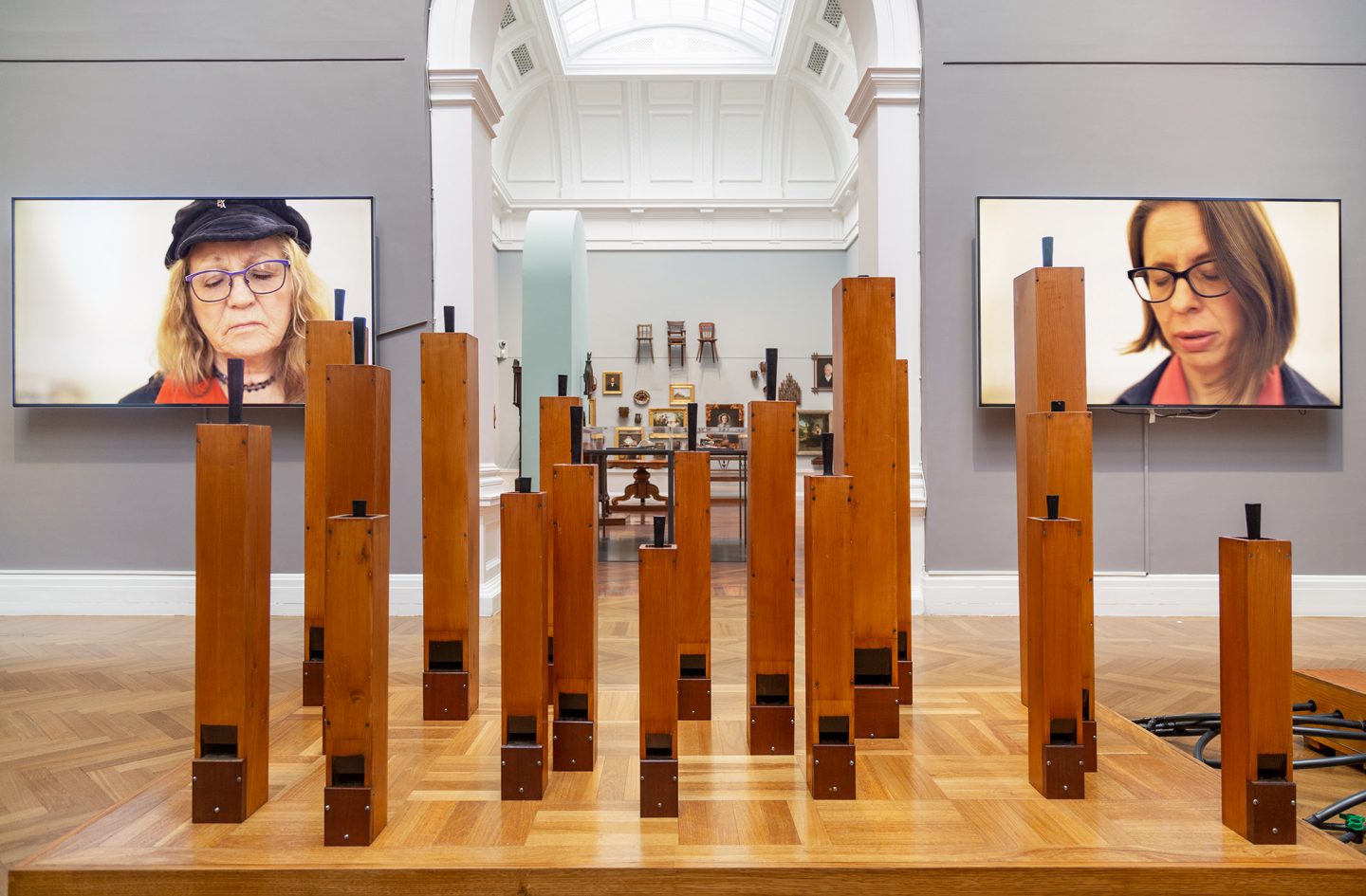
Walter Marsh
Walter is a writer and editor living on Kaurna Country.

With new acquisitions, contact tracing and a hypnotic inter-species collaboration, the atmosphere at a post-COVID Art Gallery of South Australia is slightly different, yet reassuringly familiar.
On one of my last visits to AGSA’s Elder Wing in late 2019, I witnessed an unusual ritual that reflected upon human connection, as a classically trained singer performed directly to a seated member of the public during Lee Mingwei’s Sonic Blossom.
Stepping back through the Gallery’s North Terrace on its first Friday since COVID-19 restrictions forced all galleries to close in March, I take part in a different kind of ritual. I fill out my name and contact details, deposit the slip into a ballot box-style receptacle, and place the pen in a separate tray to be sterilised. With that, I am bid into the Elder Wing, with each room now labelled with signage indicating its maximum capacity – usually 10 people per room, 20 for the big ones. As one of many ‘firsts’ we are all making again as we gradually return to public spaces, it was a reassuringly performative act that acknowledges while things are almost back to normal, we’re not quite there yet.
But, aside from those details, it would be a stretch to say the experience is altogether different from a pre-pandemic visit to the Art Gallery, when keeping a polite social distance was not a matter of public health policy, but the right and chill thing to do. The suited gallery attendants, used to reminding people not to stand too close to the paintings, don’t even need to tell visitors to steer clear of eachother.

“We’ve been really happy with the numbers, I think we’re a bit higher than the numbers we were getting before we closed – it would be aberrant to have very big numbers,” gallery director Rhana Devenport says, before a staff member quietly updates her on the day’s final headcount from door staff. “Oh that’s double what we had before we closed!” she says.
While the gallery’s doors have been shut and much of its workforce dispersed to home offices, there has been plenty of socially-distanced activity happening behind the scenes in recent months.
“A lot of the works were covered to protect them, and there was also a massive amount of back of house cleaning that you never get a chance to do because everyone’s obsessed with the next exhibition,” she says.
“What we essentially did was to just cancel an exhibition I was working on called Phenomena: Art as experience – boom. And that was a massive amount of mounting work that we just cut out – we had to be realistic. And it meant that our team could really direct their energy to back of house, and I am over the moon with what we were able to achieve, which you usually never get a chance to do. We’re open every day except Christmas – most European and American galleries are closed one day a week, and use that to do the kind of changes I’m talking about.”

With Phenomena cancelled, its looped video centrepiece Think Evolution #1: Kiku-ishi (Ammonite) by Aki Inomata has now taken pride of place in the Elder Wing’s Surrealism room, part of a subtle wave of new acquisitions and change that will greet visitors on their return.
“She’s a young, very experimental Japanese artist, and I saw the work at the Hong Kong Art Fair and completely fell in love with it,” Devenport says of the work. “What she has done is she collaborates with nature, and in this case she’s made a 3D-printed acrylic version of an ammonite, an extinct ammonite, and has then collaborated with an octopus. Who loved it, and immediately made it its home, so we watch that relationship between an art object and a live animal.”
Other new acquisitions include the cool chaos of Sidney Nolan’s 1964 oil painting Antarctica, “one-of-a-kind” clay sculpture On the beach by C. Douglas Richardson (placed on a cautiously high shelf), and a work by Fred Williams, hung in opposition to a portrait of Williams by John Brack. While works by Clarice Beckett have been taken off display in preparation for an upcoming exhibition, several well-loved Hans Heysen pieces have returned from interstate loans.
“This is the magic of the AGSA collection, that it’s so rich and so expansive that we can continue to tell new stories,” Devenport says. “We’ve actually been working really hard over the last 10 weeks rehanging a lot of works; it’s not a complete rehang but there are subtle changes in each gallery.”
With that, a staff member delivers a revised, even higher visitation figure. It seems the public’s hunger for those stories has only grown in the downtime – or, perhaps, after two months spent virtually housebound, South Australians are excited just to look at a different set of walls.

Walter is a writer and editor living on Kaurna Country.